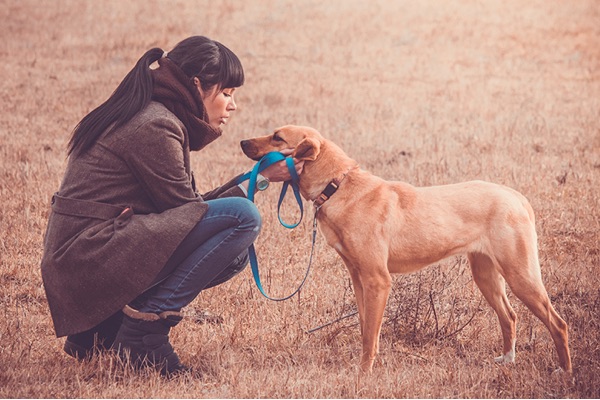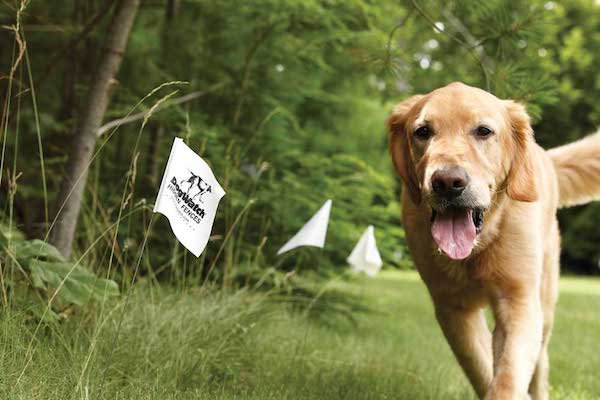While electric dog fences may seem like the best solution for keeping your dogs in control, are they really safe for them? Shock training is one of the weirdest forms of safety and a controversial one that has been adopted by the pet owners since 1973! Believe it or not.
A guy named Richard Peck discovered and patented the first electric fence in the year 1973, which was held by the Invisible Fence Inc until the year 1990 (during which the license expired). Soon after that, many companies came in and modeled the fences in their style and started selling them.
Currently, the rights of the Invisible Fence Inc is with the Radio System Corps.
There are two types of Shock Training a pet – the first one involves an electric fence that gives a shock to the dog if he crosses a particular boundary, and the second one is ‘remote controlled shock’ which is triggered by the user sending shock signals via the dog’s collar.
Contents
How to Train a Dog with an Electric Fence
Why people go for the electric fences, even if it’s a painful option?
Because, they are cheap and easy to install.
But the thing you need to understand is, electric fences won’t work the same way for all the dogs. Some dogs understand it quickly, and won’t take any chance of crossing the limit. While other dogs will try crossing the boundary again, and again even if they get shocked.
This is where you need to take the charge, and train your dog about the Electric Fencing. Patiently. You will need a lot of that.
Train Your Dog with Electric Fence – Slow & Steady Approach

You won’t get the desired benefits of the electric fence if your pet is not trained in the right way. There is no need to stress about this work, instead, create a relaxing environment and have fun with the petsafe training.
Each training step can be carried out for about 10 to 15 minutes. The shorter sessions are better than the longer ones – as it makes time for frequent sessions in a day, and won’t tire out your fur companion.
If the dog shows any of these below signs-
- Ears tucked
- Body lowered
- Pet Body Stiffening
- Putting the tail down
- Pet pulling the leash to go towards the home
- Frantic or Nervous Movements
It means your dog is under stress with the invisible fence training. You need to slow down a bit, add additional days to training, increase the play time between the fence training. Also, you could add a ‘5-minute play’ at the end of the training, which will encourage them to learn and follow the rules!
5 Training Steps for Dogs to Use an Electric Fence
Note: I went through a lot of fence training content, and other invisable fence training videos for better understanding. And surprisingly, I was following pretty much the same as directed by Oliver’s vet. This guide has been designed considering every possible detail for you. Follow them in the same order as listed-
Making Aware of the Boundaries

The dog should understand the basic commands like sit, stand, run etc. That’s when you could begin the fence training.
Begin the training session with 10-15 minutes of boundary awareness. During this period, you could train your pet about the boundary limits, flag posts, and make them understand the value of being within the yard. Walk your pet in the garden space, and as soon as they get near to the boundary zone – it will create the beep sound. Let your pooch stay for a while, and gently pull them back to the play area. Keep repeating this, and after each successful session, you can reward them with a treat.
Try the Petsafe routine for another boundary flag, and be easy on them.
Introduce them to Static Correction

Static Correction as per the definition goes like a mild electric stimulation that is passed to the pet for inducing attention. It will be like a tingling sensation on the skin, that in turn would make them aware of what they are doing and where they are going.
So, you begin the second day with the same previous boundary awareness thing. It is recommended to keep this routine continued until your pooch understands the purpose of electric fence training.
Beginning with the static correction, place the collar at the lowest possible level on your pet. This is because, some of the pets respond to the lower collar corrections, while some respond better with the collar tied up at a higher level. Depending on the size of your pet, and his/her temperament, you can select the suitable collar level.
Once they start responding to the Petsmart electric dog fence, and the warning beep sounds – you can proceed with the third step.
Time for Some Distraction

Add some Distractions to the playing environment, and see how your pooch acts in the electrically fenced yard. The distractions that you choose for this step should be something that your pet can’t resist easily; for example, their favorite toy, other dogs from the surrounding etc.
At first, they may get the corrections, but sooner they will realize how it works. Once they begin remaining in the boundary area no matter who all are present in the surrounding – they are ready to enter the 4th phase.
Try the Unleashed Supervision

Just like mentioned in the heading, it’s the unleashed session where the leash is taken off, and your pet is left without any supervision with the e-collar on their neck. With this 4th step, you will come to know how your dogs behave in your absence and especially when they are not in your control.
For the initial trials (as they are off-leash for the first time), it is better that you stay outside with your pet and keep a close check on their movements during the invisible fence training.
Monitoring Your Pet’s Movement

If you find your pet performing better with the no-leash situation, then it’s time to leave them all alone. You don’t need to give them a company and simply stay indoors while monitoring the dog from distance.
You can stay indoors or by the balcony, and check them once a while. That would be pretty enough.
In case, they cross the boundaries for any damn reason, don’t worry. Just stay cool, repeat the 4th and 5th steps again, adding The best temptations possible and make it more challenging for them.
It will surely bring some improvement in them.
Once you are completely sure that your Spud won’t cross the boundary in any situation, this is when the electric fence dog training gets concluded.
A Few Post-Training Tips
You can take off the flags once your dog is aware of the boundaries. Well, there is another important point to note here – the invisible fence system can instill the fear of crossing the boundary or even moving outside the yard. It is very essential for you to take special note about this, and work on making things easier for them.
To start with, remove the flags!
Secondly, take them along for the evening walks through a separate gate which is at distant from the yard. Make them understand that this is the ‘only’ way to move outside the boundary and keep a check that they cross the gate only in your company.
These electric fence dog training tips will also ensure your safety (yes you!) and let the pooch hate you less 😁
Things You Should Never Do While Fence Training a Dog

If you are all set to commence the Fence, make sure that the following invisible fence training instructions are taken care:
- Do not leave them unattended during the fence training period.
- Understand your pet carefully, and listen to what they say. My point is, you need to share a close, sharing bond. So, don’t un-listen them.
- Do not forget to double check the condition of the dog collars.
- Make them aware about the dangers of crossing the petsmart invisible fence. But don’t frighten or scare them.
Read More:
Summary
That’s how you train your goofy fellow on an electric fence, and I hope the post helped you in making the invisible fence system sound simple and effective.
You can check out the below petsafe training video to get more idea on dog training fence and how to get pro in it-

My husband and I want to get a fence of some sort for our pup, so we wanted tips on training her. I didn’t know your first training session with your dog should be boundary awareness, so your pup knows when they’re somewhere they shouldn’t be like your garden. I’ll have to talk to a fencing contractor that can tell me when to install a dog fence, thanks to this post!